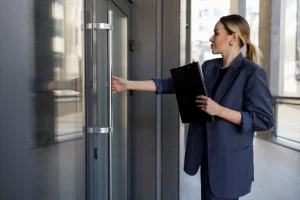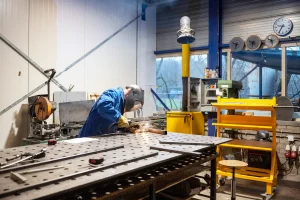First impressions matter, and your entryway is the perfect place to make one. It sets the tone for your property, blending style, security, and functionality. A thoughtfully chosen door can elevate your space, providing both curb appeal and essential protection. With so many designs and materials available, the possibilities are endless, allowing you to customize your entryway to reflect your taste while meeting practical needs.
But how do you choose the right one? The key lies in understanding the balance between design and performance. In this blog, we’ll explore the types of exterior doors and how to select the perfect one that suits both your aesthetic vision and your security requirements. Read on to know more about the options that can transform your entryway into a statement of both beauty and strength.
What are Exterior Doors?
Exterior doors are essential architectural components that connect the outside world to the interior of a home or building. Designed specifically for outdoor use, these doors serve as the first line of defense against environmental elements and unwanted access, playing a crucial role in both security and energy efficiency.
Whereas interior doors focus primarily on aesthetics and room separation, exterior doors are constructed with performance in mind. They must withstand exposure to sun, wind, rain, and fluctuating temperatures without compromising structural integrity. As a result, they are typically made from heavy-duty, weather-resistant materials like steel, fiberglass, wood, or aluminum.
Beyond functionality, however, exterior doors also contribute significantly to a building’s curb appeal. The front door, in particular, is often considered the focal point of a property’s facade. Whether it’s a sleek modern entryway or a richly stained wooden door with decorative glass panels, the exterior door is a visual and functional gateway that reflects the character of the building and its occupants.
Additionally, modern exterior doors often incorporate advanced features such as multi-point locking systems, insulated cores, reinforced frames, and smart technology compatibility. These innovations enhance security, improve thermal insulation, and provide convenience, at the same time complementing a property’s overall design.
Types of Exterior Doors
There are different types of exterior doors, each designed to match the needs of a building in terms of security, durability, and appearance. Below are some of the most common options:
1. Steel Exterior Doors
Steel doors are valued for their toughness, making them a popular choice for security and durability. They are resistant to warping, cracking, and weather damage, and often have insulated cores to help with energy efficiency.
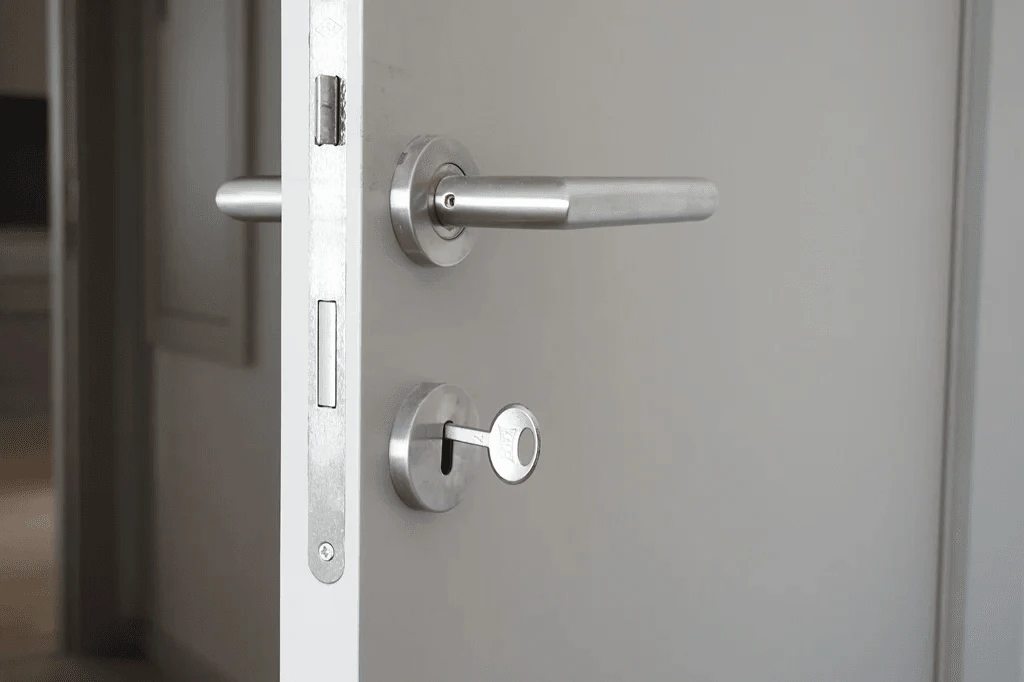
2. Wood Exterior Doors
Wood doors offer a classic, natural look that adds warmth and character to a building’s exterior. While they require regular maintenance to protect against moisture and weather, their appearance and versatility make them a timeless choice.
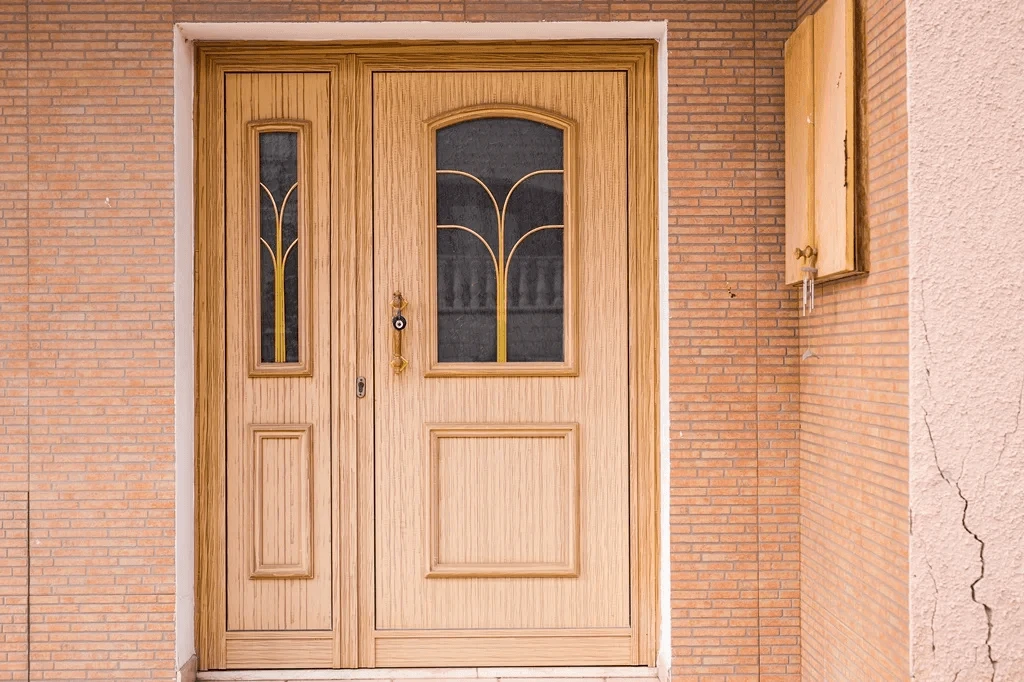
3. Fiberglass Exterior Doors
Fiberglass doors are built to mimic the look of wood while offering better resistance to dents, scratches, and weather changes. They are low-maintenance, energy-efficient, and suitable for areas with harsh weather conditions.
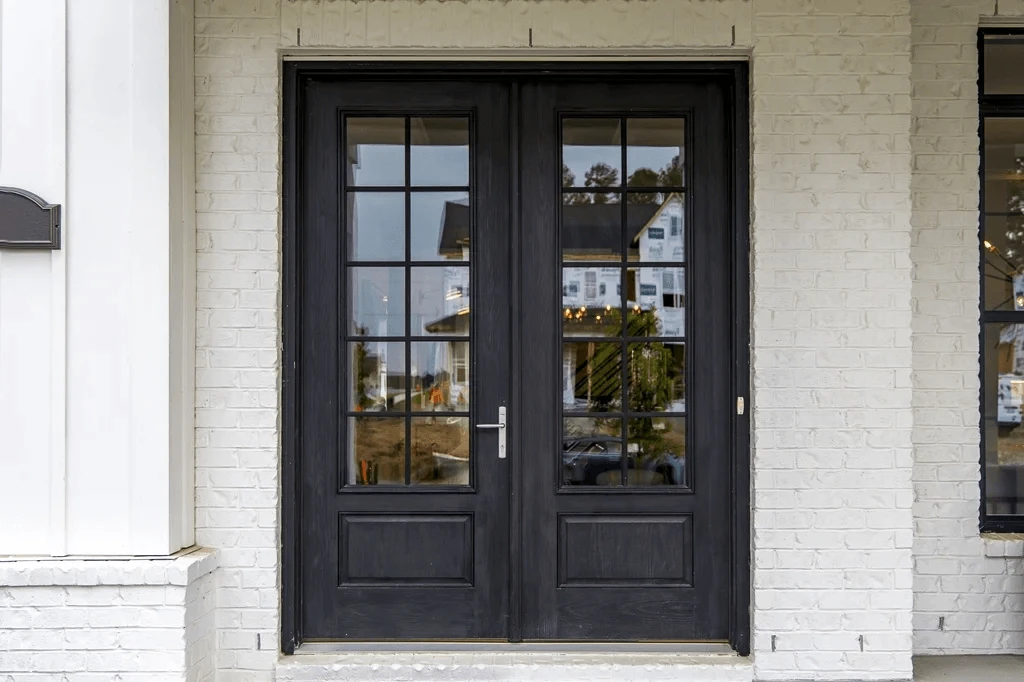
4. Glass Exterior Doors
Glass doors, often used for patios or front entrances with decorative panels, allow natural light to enter while enhancing a building’s appearance. Many feature tempered or double-pane glass for added security and insulation.
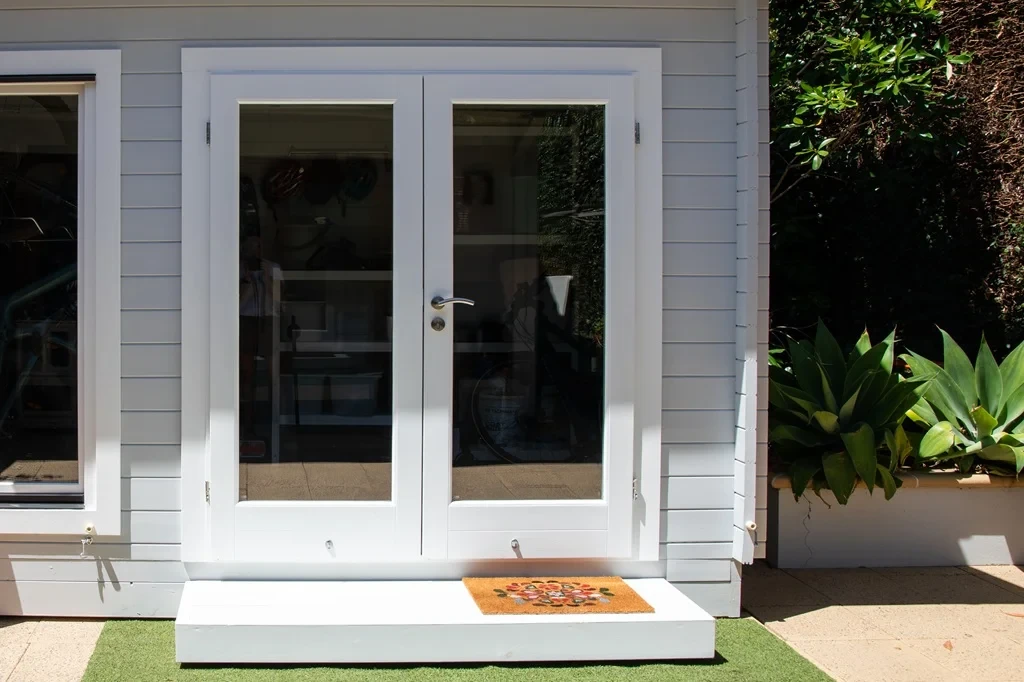
5. Aluminum Exterior Doors
Aluminum doors are lightweight, corrosion-resistant, and often used for modern-style homes and commercial properties. They require minimal upkeep and work well in humid or coastal areas where moisture can be a concern.
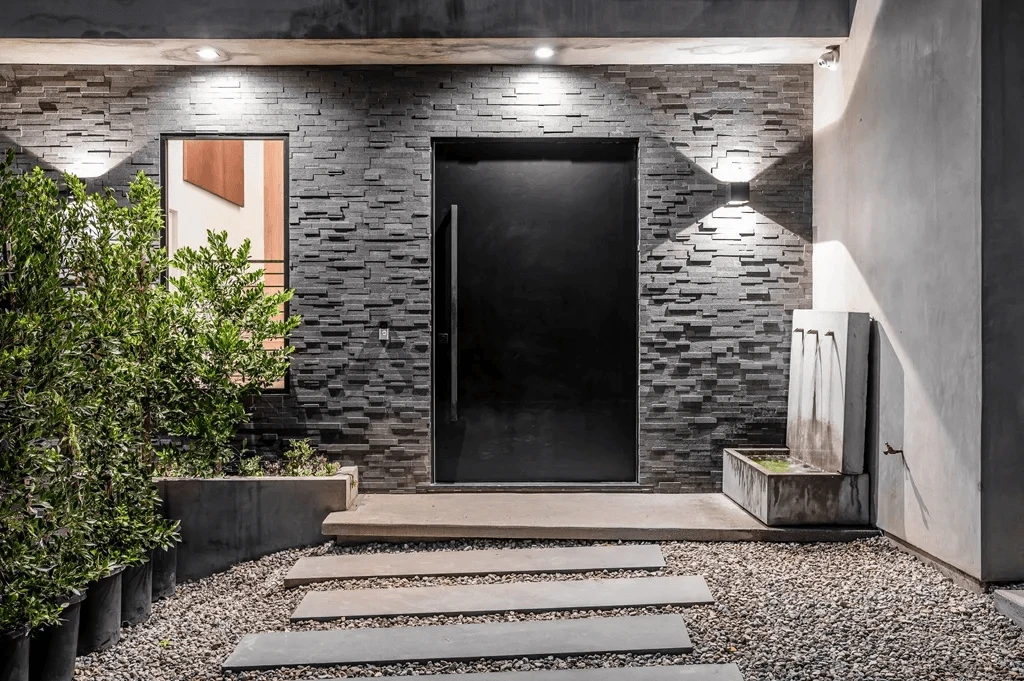
Comparison of Exterior Door Types
Here’s a breakdown that compares the different types of exterior doors to each other:
| Feature | Steel | Wood | Fiberglass | Glass | Aluminum |
|---|---|---|---|---|---|
| Durability | Excellent; resists warping and impact | Good; prone to warping if untreated | Excellent; resists dents and scratches | Moderate; glass is durable but can break | Good; resists corrosion and wear |
| Security | Very High | Moderate to High | High | Moderate to High (with reinforced glass) | Moderate |
| Maintenance | Low | High; needs sealing/painting | Low | Moderate; glass may need cleaning | Low |
| Energy Efficiency | High, often insulated | Moderate | High; insulated cores available | Varies; depends on glazing | Moderate to High |
| Weather Resistance | Excellent | Moderate | Excellent | Moderate | High |
| Aesthetic Appeal | Modern, strong appearance | Classic, warm, natural look | Versatile; mimics wood well | Elegant, light-enhancing | Sleek, modern design |
| Cost | $$ | $$$ | $$–$$$ | $$–$$$ | $$ |
| Best For | Security, harsh weather areas | Traditional homes, aesthetic value | Low-maintenance, versatile design | Light-filled entryways, patio doors | Coastal or humid environments |
Why Steel Doors Stand Out for Exterior Use
As we can see from the comparisons above, steel doors offer a smart balance of strength, durability, and value. This, in turn, makes them a trusted option for exterior entrances. Here are some key reasons they’re a preferred choice:
Exceptional Strength and Security
Steel doors are known for their solid, durable structure that makes them highly resistant to forced entry. This makes them an excellent choice for securing homes, offices, and commercial spaces. Their tough surface also stands up well against dents, impacts, and daily wear.
Weather Resistance and Durability
Unlike wood, steel doors do not warp, crack, or rot when exposed to changing weather conditions. They perform well in both hot and humid climates, as well as in areas with heavy rain or strong winds. This makes them a reliable, long-term investment for exterior use.
Energy Efficiency
Many steel exterior doors are built with insulated cores that help reduce heat transfer. This keeps indoor temperatures more stable, lowering the need for heating or cooling. As a result, they play a key role in improving a building’s energy efficiency and reducing utility costs.
Low Maintenance
Steel doors require very little upkeep compared to other materials like wood. They only need occasional cleaning and minor touch-ups to maintain their appearance. Their resistance to scratches, moisture, and fading also keeps them looking new for years.
Cost-Effective Option
While offering the strength and benefits of high-end materials, steel doors are generally more affordable than solid wood or specialty fiberglass doors. They deliver long-term value with their durability and minimal maintenance needs. This makes them a practical choice for both residential and commercial properties.
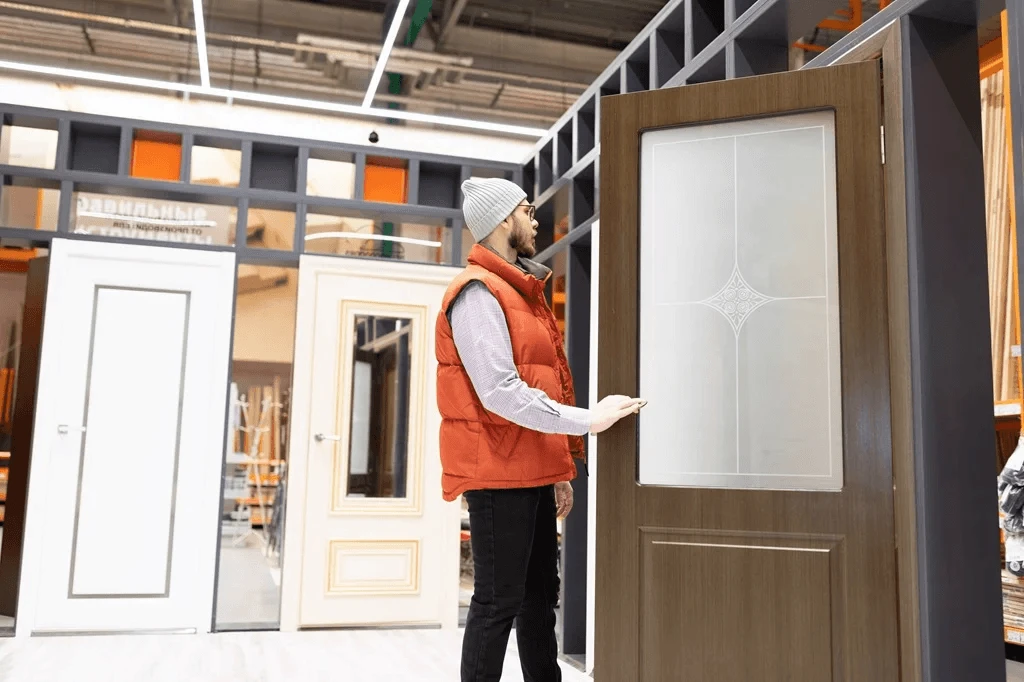
Key Factors to Consider When Selecting an Exterior Door
Selecting the right exterior door is important for both the safety and appearance of any property. Here are the main factors property owners should keep in mind:
1. Durability
Choose a door made from materials that can handle outdoor conditions like heat, rain, and humidity. Durable doors last longer and maintain their appearance with minimal wear and tear. Steel, fiberglass, and solid wood are popular options known for their strength.
2. Security
An exterior door should offer reliable protection against unwanted entry. Look for doors with sturdy frames, secure locking systems, and impact-resistant surfaces. Steel doors, in particular, are valued for their excellent security features.
3. Style and Design
The door should match the overall look of the building while adding to its curb appeal. Property owners can choose from various finishes, colors, and panel designs to suit modern, classic, or industrial styles. Decorative glass inserts and unique hardware can also enhance the door’s appearance.
4. Maintenance Requirements
Different door materials require different levels of care to stay in good condition. Steel and fiberglass doors are typically low-maintenance, needing only occasional cleaning. Wood doors, while attractive, may need regular painting or sealing to protect against moisture and damage.
5. Energy Efficiency
A well-insulated door helps maintain a comfortable indoor temperature and lowers energy costs. Look for doors with insulated cores or energy-saving features like weather stripping and thermal breaks. Energy-efficient doors are especially useful in areas with extreme weather conditions.
6. Budget
Exterior doors come in a wide price range depending on material, design, and added features. Property owners should balance quality, appearance, and long-term value when choosing a door within their budget. Investing in a durable, low-maintenance door can help save on future repair or replacement costs.
Ready to Upgrade? Discover the Perfect Exterior Door Today!
Exterior doors play a big role in protecting any property while also adding to its overall appearance. Whether it’s for a home, office, or commercial space, choosing the right door makes a difference in both security and style. A strong, well-designed exterior door not only keeps your property safe but also improves its curb appeal, leaving a good impression on guests, clients, or passersby.
If you’re looking for a reliable upgrade, consider switching to high-quality steel doors from Janus Steel OPC. Built for strength, durability, and modern design, our steel doors are designed to handle tough weather conditions and provide added protection against unwanted entry. On top of their solid security features, Janus Steel doors come in a range of styles and finishes to suit any type of property, giving you the perfect balance of safety and style in one dependable product. Enhance your property’s security and aesthetics—reach out to us today to get started!

